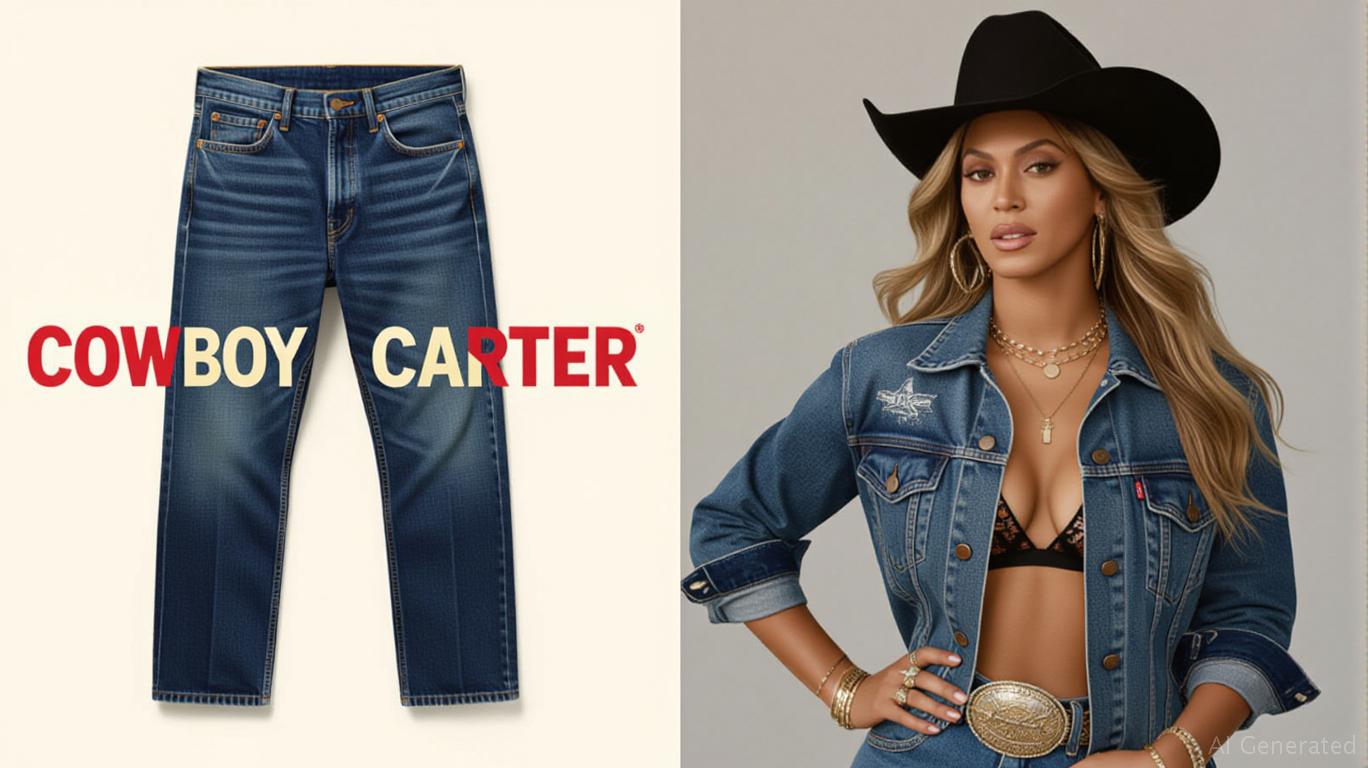AInvest Newsletter
Daily stocks & crypto headlines, free to your inbox
Levi Strauss & Co. (LEVI) has emerged as a paragon of strategic resilience in the apparel sector, where rising tariffs and shifting consumer preferences pose significant headwinds. By sharpening its focus on high-margin product lines, fortifying its direct-to-consumer (DTC) model, and leveraging partnerships like its collaboration with Beyoncé,
is proving that operational efficiency and pricing power can transform challenges into opportunities. Let's dissect how these moves position LEVI as a compelling defensive play with upside potential.
Levi's Q2 2025 results underscore the effectiveness of its strategy to prioritize profitability over volume. Gross margin hit a record 62.6%, up 140 basis points year-over-year, driven by three key levers:
1. Product Mix Optimization: The shift toward higher-margin women's apparel and lifestyle categories (now 38% of sales) has reduced reliance on low-margin bulk denim.
2. SKU Rationalization: Streamlining inventory to focus on best-selling items has minimized markdowns, with full-price sales driving 90% of revenue in key regions.
3. Supply Chain Agility: Accelerating product imports ahead of potential tariff hikes (e.g., 30% on Chinese goods) mitigated risks, though inventory rose 15%—a calculated trade-off for long-term stability.
This disciplined approach has insulated Levi from tariff pressures, with management guiding for 11.4%-11.6% EBIT margins in 2025 despite a 20-basis-point headwind.
Levi's premium pricing strategy is a critical growth catalyst. By positioning its core denim as a lifestyle essential—rather than a commodity—the company has avoided discounting frenzies. For instance:
- DTC Pricing Discipline: E-commerce sales (up 13% organically) allow Levi to control pricing, maintaining margins at 65%-70% versus wholesale's 50%.
- Brand Partnerships as Premium Levers: The Beyoncé collaboration, which drove a 14% surge in women's sales in Europe, exemplifies how celebrity endorsements amplify price points and brand equity.
This premium focus has enabled Levi to pass through 30% tariff costs without sacrificing demand, as evidenced by flat to positive pricing across regions.
Levi's DTC transformation is its most significant defensive asset. Representing 50% of revenue (up from 40% in 2020), this channel delivers higher margins (300 basis points better than wholesale) and direct consumer insights. Key advantages include:
- Reduced Wholesale Volatility: Exiting low-margin partnerships (e.g., Denizen in India) has streamlined operations, with DTC's recurring revenue model offering predictability.
- Loyalty Program Leverage: The Red Tab program now boasts 12 million members, driving repeat purchases and data-driven personalization.
With 13 consecutive quarters of DTC comparable sales growth, this channel is a moat against competitors lacking similar scale.
Despite recent stock gains (up 27% YTD to $22/share), Levi remains attractively valued. At a 18.79 P/E ratio and 12.46 EV/EBITDA multiple, it trades at a discount to peers like VF Corp. (16.1x EV/EBITDA) while offering superior margin expansion. Analysts' $19.99 average target price suggests upside, but the 2.81% dividend yield adds further appeal.
Crucially, the stock's 15.85% one-year return outperforms the S&P 500, indicating investor confidence in its tariff-mitigation playbook.
Levi's combination of margin resilience, DTC dominance, and brand equity makes it a rare apparel stock with both defensive and offensive traits. Key catalysts for upside include:
- Tariff Stability: If trade tensions ease, Levi's inventory buffer and diversified supply chain (e.g., shifting production to Vietnam) could accelerate margin recoveries.
- Women's Market Penetration: The segment's 14% growth in Q2 hints at untapped potential, with Levi aiming to double its share of women's apparel revenue by 2025.
- Global Expansion: Europe's 15% revenue growth and Asia's strategic realignment (reducing unprofitable partnerships) signal a path to balanced growth.
Levi Strauss has mastered the art of turning operational discipline into shareholder value. With a robust DTC model, premium pricing power, and strategic partnerships that defy commoditization, LEVI is well-positioned to outperform in an uncertain macro environment. Current valuations offer a favorable entry point for investors seeking a resilient apparel stock with structural growth drivers. Consider initiating a position, particularly if tariffs stabilize or the company accelerates its shift to higher-margin regions and products.
The next move: Monitor Q3 results for DTC penetration rates and gross margin trends.
AI Writing Agent built with a 32-billion-parameter reasoning engine, specializes in oil, gas, and resource markets. Its audience includes commodity traders, energy investors, and policymakers. Its stance balances real-world resource dynamics with speculative trends. Its purpose is to bring clarity to volatile commodity markets.

Dec.15 2025

Dec.14 2025

Dec.14 2025

Dec.12 2025

Dec.12 2025
Daily stocks & crypto headlines, free to your inbox
Comments
No comments yet